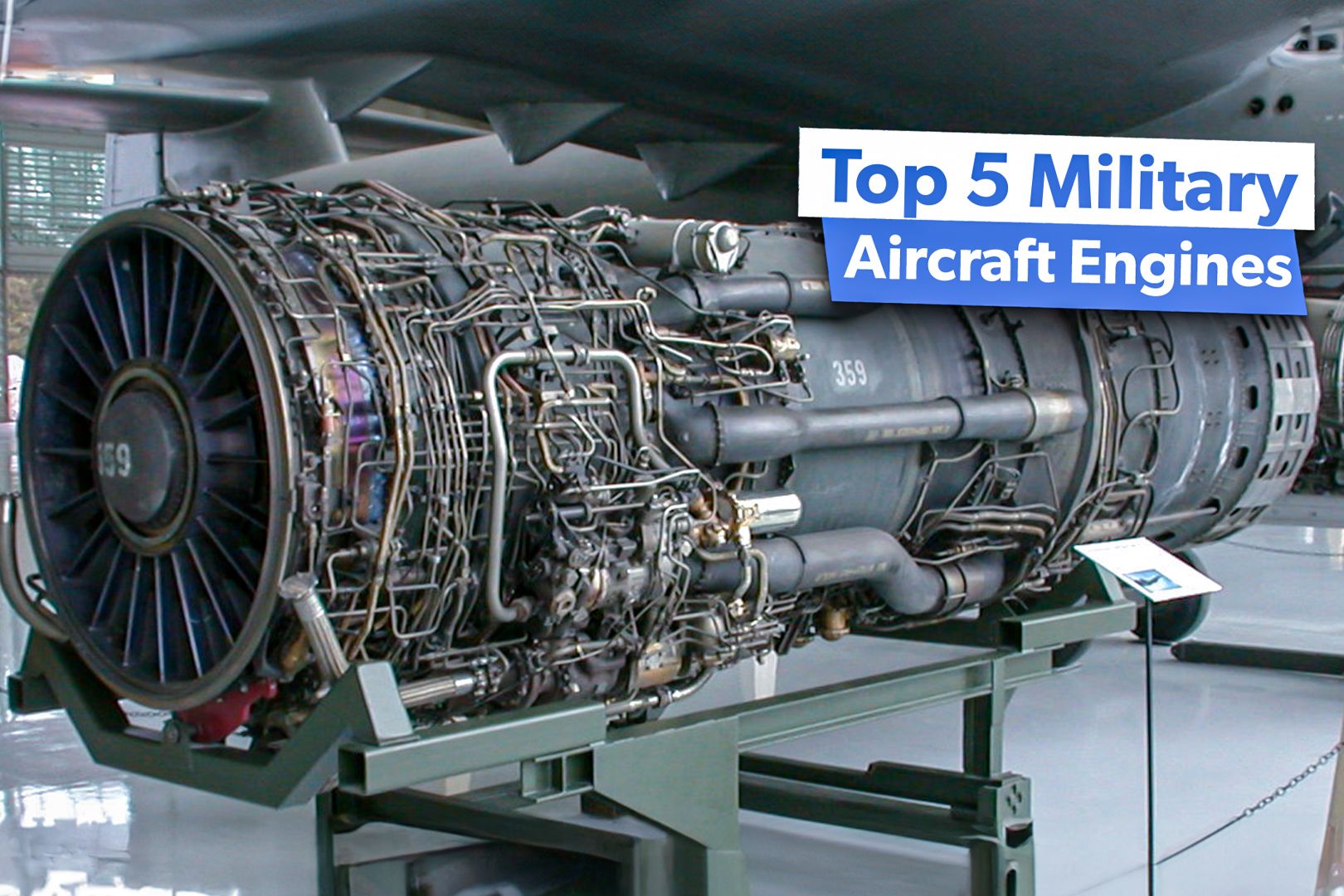Summary Pratt & Whitney F119: World's first 5th-gen fighter engine, powers F-22 & F-35, top-tier tech. Snecma M88: High-efficiency engine powers Rafale jet, global export success. Rolls-Royce LiftSystem: Unique STOVL tech in F-35B for vertical takeoff.
World War II was a time of revolution for aircraft engines - especially jet engines . The German Junkers Jumo 004 was the world's first production turbojet engine in operational use. Soon after, the British Nene was reverse-engineered by the Soviets post-war to develop the Klimov RD-45 and Kilmov VK-1 (which were used in the MiG-15).

Jet engines continued to develop through the Cold War and to the present. Today, not only do GE, Pratt & Whitney, and Rolls-Royce dominate the commercial passenger jet engine market , but they also dominate the fighter jet market. Here are five revolutionary military jet engines in use today.
1 Pratt & Whitney F119 The PW F119 was the world's first 5th-generation fighter jet engine First run: 1993 (ground tests) Thrust: 35,000 lbf (43,000 lbf for F135) Applications: F-22 Raptor, F-35 Lightning II The F-22 Raptor is regarded as the world's most formidable air superiority fighter jet. It is powered by a pair of Pratt & Whitney F-119 engines that provide the jet with supercruise capability. The F119-PW-100 turbofan is the first operational 5th-generation fighter jet engine and is built to combine stealth technologies and vectored thrust with high thrust-two-weight performance.
The F119 is a leap in fighter jet engine technology that provides unprecedented maneuverability and survivability. It delivers almost 22% more thrust while using 40% fewer parts than its F100 predecessor. It has also been developed into the F-35's Pratt & Whitney F135 engine (which provides the F-35 with 43,000 lbs of thrust).
The F-22 Raptor remains the world's most potent and stealthy 5th-generation air dominance fighter jet. 2 Snecma M88 Safran's M88 is known for efficiency and thrust First run: 1990 (first aircraft testing) Thrust: 16,000 lbf (with afterburner) Applications: Dassault Raffale The French-made Snecma M88 engine is used in the Dassault Rafale and is known for its efficiency and thrust. The French defense contractor Safran states , " Wholly designed, developed and produced by Safran Aircraft Engines, the M88 powers Dassault Aviation’s Rafale multirole fighter deployed by French armed forces and export customers.
" Safran also states it has a fully modular design (which helps to facilitate maintenance) and is upgradeable. The M88 has helped make the Dassault Rafale a major export success and an alternative to US and Russian fighter jets for countries worldwide. So far, the M88 powers the Rafales in the service of the air forces of Egypt, Qatar, India, Greece, Croatia, UAE, Indonesia, and more.
As the order backlog grows, Dassault is looking to significantly ramp up the production of its popular 4.5-generation Rafale fighter jet. 3 Pratt & Whitney J58 The PW J58 pushed the SR-71 past Mach 3 First run: 1950s Thrust: 30,000 lbf (afterburner) Applications: Lockheed A-12, Lockheed SR-71 The SR-71 Blackbird is one of the most iconic spy planes ever built and one of the most iconic jets of the Cold War.
The Blackbird is famous for the high speed at which it flew, which was possible thanks to its two powerful J58 engines. The J58 was first developed in the late 1950s to meet a US Navy requirement. It is designed to operate at a speed of Mach 3+ and at altitudes exceeding 80,000 feet (the top speed attained by the SR-71 was 2,193 mph).
The J58 was designed with a unique compressor that bleeds to the afterburner, enabling it to have increased thrust at high speed. As the aircraft had to operate at such a broad speed, the J58 had two modes of operation to take it from being stationary on the ground to over Mach 3. The Air and Space Museum notes , " For extreme high-altitude and high-speed environment operation, the engine required special fuel and oil .
" The SR71 is the fastest operational military aircraft ever. Piloting was a challenge for several reasons. 4 Rolls-Royce LiftSystem The LiftSystem is the only one of its type and provides 20,000 lbs of thrust First run: 2001 (flight testing) Thrust: 20,000 lbf Lift Fan (41,900 lbf total) Applications F-35B Lightning II The F-35 fighter comes in three variants, which are almost three different aircraft.
The F-35B is a Short Take-off and Vertical Landing (STOVL) aircraft designed for America's amphibious assault ships and the world's smaller aircraft carriers (the Navy operates F-35Cs off the carriers). The F-35B includes the British Rolls-Royce LiftSystem that works with the aircraft's F135 engine to enable it to be an STOVL aircraft. The Rolls-Royce LiftSystem is the world's only STOVL technology for supersonic jets in production today.
Today, the Royal Navy and Royal Air Force jointly operate the F-35B (the only variant being purchased by the UK). The F-35B will also form the backbone of US Marine Corps fighters and is also being procured by Japan and Italy. The F-35 stealth fighter has three very distinct variants optimized for three US service branches.
5 General Electric XA100 The GE XA100 is to add 30% more range compared to older engines First run: 2020 Thrust: 45,000 lbs (thrust class engine) Applications: F-35 Lightning II, NGAD (planned) General Electric is developing the next generation of fighter jet engines for the F-35 fighter and the Air Force's future sixth-generation NGAD fighter. The General Electric XA100 is an adaptive cycle engine demonstrator that is expected to add 30% more range and over 20% more acceleration. It will be much more powerful and efficient, compared to the existing low-bypass turbofans.
General Electric states , " We can exchange engines with a full quick engine change (QEC) swap. On Wing Support will then service your engine at one of our quick-turn shops that can repair or replace the fan, compressor, combustor, and high-pressure turbine and low-pressure turbine modules. ".



















